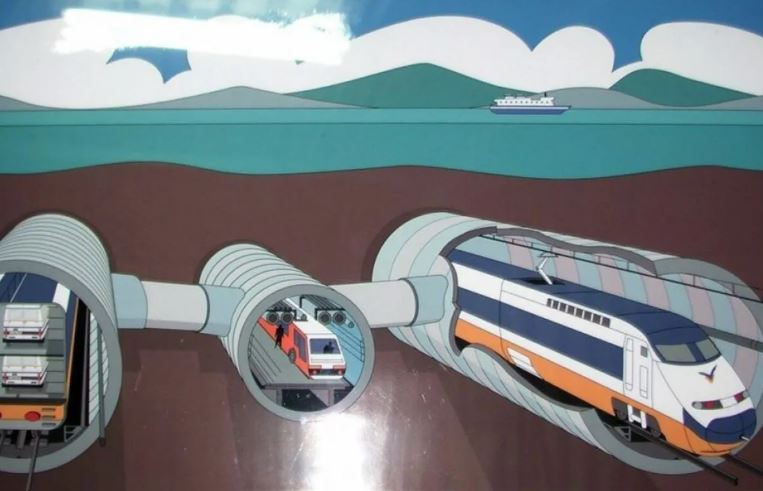The Strait of Gibraltar tunnel project, a monumental undertaking envisioned for nearly a century, is resurging as a viable possibility due to advancements in engineering technology. This ambitious project aims to connect Europe and Africa via an undersea tunnel spanning the 24-mile strait between Spain and Morocco. Projected to accommodate an annual traffic of 12.8 million people, the tunnel would significantly reduce travel time between major cities like Madrid and Casablanca, shrinking the current 12-hour car or ferry journey to a mere five-and-a-half hours, rivaling the speed of a two-hour flight. This endeavor, if realized, would stand as one of the most remarkable engineering achievements of modern times.
The proposed tunnel’s design comprises three single-track tunnels – two for traffic flow and one service tunnel – interconnected by traverse passages at regular intervals. Each traffic tunnel would boast an internal diameter of 7.9 meters, while the service tunnel would measure 6 meters. The tunnel would traverse both underwater and underground sections, with the underwater portion stretching for 17 miles and the underground section covering 6 miles. Passengers would experience only a fraction of the journey – a mere 2 miles, representing 8% of the total distance – at ground level, spending the majority of the transit immersed hundreds of meters below sea level.
The project’s current momentum follows a period of dormancy since 2009. A Spanish firm, Herrenknecht Iberica, has been awarded a £250,000 contract to conduct a crucial drilling feasibility study, addressing significant challenges posed by the unique geological and oceanic conditions. Unlike the Channel Tunnel connecting England and France, the Strait of Gibraltar project faces greater complexities stemming from greater depths, stronger sea currents, variable tides, and unpredictable wind speeds during the construction phase. A major concern revolves around the active tectonic plates beneath the strait, a region prone to seismic activity.
The historical roots of this cross-continental connection trace back to 1979, with a joint declaration of intent signed by King Hassan II of Morocco and King Juan Carlos I of Spain. Despite substantial investments in the 1980s, the project remained stagnant for decades. Renewed interest materialized in April 2023 when Spain and Morocco agreed upon a three-year work plan during the 43rd meeting of the Spanish-Moroccan Committee. This resurgence aligns with the upcoming 2030 FIFA World Cup, jointly hosted by Spain, Portugal, and Morocco, suggesting that the event’s timeline serves as a catalyst for expediting the project’s development.
The Strait of Gibraltar tunnel project’s ambition transcends mere transportation infrastructure. Its successful completion would symbolize a significant bridge between two continents, fostering stronger economic and cultural ties between Europe and Africa. The tunnel stands to revolutionize trade and tourism, facilitating seamless movement of goods and people, and boosting regional economic growth. Furthermore, the project would serve as a testament to human ingenuity, pushing the boundaries of engineering capabilities in challenging environments.
However, the project’s realization hinges on successfully overcoming multiple hurdles. The feasibility study will be instrumental in assessing the viability of construction in the face of complex geological and oceanic factors. Addressing seismic concerns, mitigating environmental impacts, and securing substantial funding will be critical for the project’s progress. The collaborative efforts of Spain and Morocco, coupled with advancements in engineering technology, will ultimately determine whether this century-old dream of a transcontinental tunnel becomes a reality.











